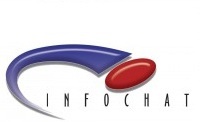Worldwide mobile payment transaction values will surpass $171.5 billion in 2012, a 61.9 percent increase from 2011 values of $105.9 billion, according to Gartner, Inc. The number of mobile payment users will reach 212.2 million in 2012, up from 160.5 million in 2011.
“We expect global mobile transaction volume and value to average 42 percent annual growth between 2011 and 2016, and we are forecasting a market worth $617 billion with 448 million users by 2016,” said Sandy Shen, research director at Gartner. “This will bring opportunities for service and solution providers who will need to cater to the local demand patterns to customize their offerings.”
The mobile payments market will experience fragmented services and solutions for the next two years. Technology providers will have to cater their solutions to the local market that will be using different access technologies, business models and partners, and under different regulatory conditions.
“There will be a few global players that have the scale and resources to serve large customers and the mass market whose requirements can be readily satisfied by standard solutions,” Ms. Shen said. “However, there will always be segments that cannot be sufficiently served by the global players. The demand of these segments can only be satisfied by specialized or local players who can better understand the segment and have specific solutions to meet the unique challenges.
SMS remains the dominant access technology in developing markets because of the constraints of mobile devices and the ubiquity of SMS. Web/WAP is the preferred access technology in North America and Western Europe where mobile Internet is commonly available and activated on user devices. Gartner expects Web/WAP access to account for about 88 percent of total transactions in North America and about 80 percent in Western Europe by 2016. Near Field Communication (NFC) transactions will remain relatively low through 2015, although growth will start to pick up from 2016.
“NFC payment involves a change in user behavior and requires collaboration among stakeholders that includes banks, mobile carriers, card networks and merchants,” said Ms. Shen. “It takes time for both to happen, so we don’t expect NFC payments to come into the mass market before 2015. In the meantime, ticketing, rather than retail payment, will drive NFC transactions.”
Merchandise purchases will drive transactions in North America and Western Europe. These will include e-commerce purchases where users buy online, as well as in-store purchases. Major e-tailers such as Amazon and eBay have developed strong mobile storefronts and have seen significant growth from the mobile channel. For in-store purchases, Starbucks’ Card Mobile app is now being rolled out nationwide in the U.S., following a successful pilot program, and Gartner expects a large number of merchants to introduce their own mobile payment services, trying to emulate Starbucks’ success.
In developing markets, money transfer and airtime top-ups will account for most transaction volume, and money transfers will account for the largest portion of the transaction value because of the demand for secure and efficient ways of storing and transferring money. Ticketing/parking also appeals across many markets because it can improve efficiency in transacting, as well as offering user convenience. In developing markets, such as Africa and South Asia, users can buy bus and railway tickets using a mobile payment service so that they can secure tickets earlier where tickets are often in short supply.
Gartner projects that Eastern Europe will see the highest user growth between 2011 and 2016, albeit from a smaller user base. Asia/Pacific tops all regions in the number of users, followed by Africa. This also contributes to high transaction volume, where the two regions combined will account for more than 60 percent of the global mobile payments volume in 2016. Africa tops all regions in transaction value throughout the forecast period, benefiting from a higher proportion of money transfer transactions that have higher value per transaction than other use cases. North America is the third-largest region by value in 2016 and is twice the value of Western Europe.







